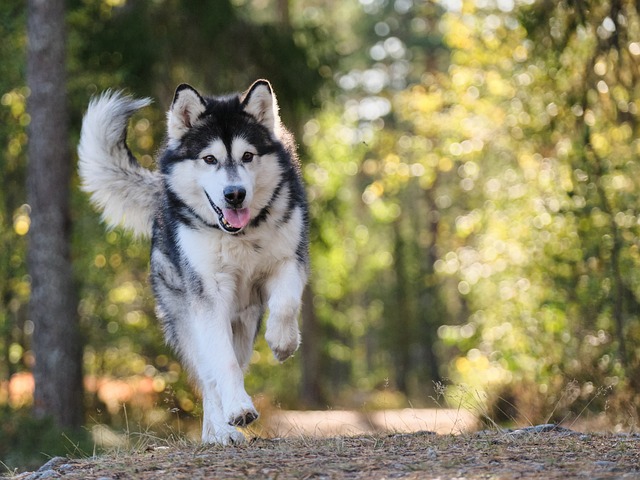Assistance dogs provide invaluable support to individuals with disabilities, helping them navigate daily life with greater independence and confidence. However, the increasing presence of fake assistance dogs—pets fraudulently presented as service animals—poses significant challenges. These imposters can undermine the credibility of genuine assistance dogs, disrupt public spaces, and create safety concerns. This comprehensive guide aims to educate you on how to spot fake assistance dogs in the UK, covering legal definitions, key indicators, and the implications of fraudulent service animals.
Understanding Assistance Dogs in the UK
Legal Definitions and Protections
In the UK, assistance dogs are granted certain legal protections and rights under the Equality Act 2010. According to this legislation:
1. Assistance Dogs: Dogs trained to perform specific tasks for individuals with disabilities, enabling them to live more independently.
2. Recognised Organizations: Assistance dogs must be trained by organizations that are members of Assistance Dogs UK (ADUK), which includes charities like Guide Dogs, Hearing Dogs for Deaf People, and Dogs for Good.
Types of Assistance Dogs
1. Guide Dogs: Help visually impaired individuals navigate safely.
2. Hearing Dogs: Alert deaf individuals to important sounds.
3. Mobility Assistance Dogs: Aid individuals with physical disabilities by performing tasks such as opening doors or retrieving items.
4. Medical Alert Dogs: Detect and alert to medical conditions like diabetes or epilepsy.
5. Psychiatric Service Dogs: Assist individuals with psychiatric conditions by performing tasks that mitigate their symptoms.
Key Indicators of Genuine Assistance Dogs
Behavior and Training
1. Calm Demeanor: Genuine assistance dogs are well-behaved, calm, and focused on their handlers. They should not bark, whine, or act aggressively in public.
2. Task Performance: Assistance dogs perform specific tasks related to their handler's disability. For example, a guide dog will help navigate obstacles, while a hearing dog will alert to sounds.
3. Controlled Movement: These dogs are trained to walk calmly by their handler’s side, avoid distractions, and follow commands promptly.
Identification and Documentation
1. Identification Vests or Harnesses: Many, but not all, assistance dogs wear vests or harnesses that identify them as service animals. These often include the logo of the training organization.
2. Identification Cards: Handlers of genuine assistance dogs should carry identification cards issued by the training organization, which can be presented upon request.
3. Documentation: Legitimate handlers can provide documentation from recognized organizations confirming their dog’s status as an assistance dog.
Spotting Fake Assistance Dogs
Behavioral Red Flags
1. Poor Behavior: Dogs that are aggressive, disruptive, or not under control are likely not genuine assistance dogs.
2. Distracted and Hyperactive: A real assistance dog remains focused on its handler and tasks, whereas a fake one may be easily distracted or overly energetic.
3. Lack of Training: Genuine assistance dogs demonstrate high levels of obedience and discipline, unlike untrained pets posing as service animals.
Physical Indicators
Improper Equipment: Fake assistance dogs might wear unofficial vests or harnesses that can be purchased online. These often lack the professional look and logos of recognized organizations.
No Identification Card: If the handler cannot produce an identification card from a recognized training organization, this is a major red flag.
Interaction with the Handler
Inconsistent Commands: Genuine handlers use consistent commands and their dogs respond appropriately. Fake assistance dogs may not respond correctly or consistently.
Handler's Knowledge: Legitimate handlers are knowledgeable about their dog’s training and the specific tasks it performs.
Legal and Ethical Implications
Legal Consequences
Fines and Penalties: Misrepresenting a pet as an assistance dog can result in fines and other legal consequences under the Fraud Act 2006.
Access Issues: Businesses have the right to refuse entry to poorly behaved animals, even if they are claimed to be assistance dogs. This can affect genuine handlers negatively.
Ethical Concerns
Undermining Trust: Fake assistance dogs undermine the public’s trust in legitimate service animals, making it harder for genuine handlers to be accepted and accommodated.
Safety Risks: Untrained animals can pose safety risks to the public, other animals, and genuine assistance dogs.
What to Do If You Suspect a Fake Assistance Dog
For the Public
Observe and Report: Note the behavior of the dog and handler. If you suspect fraud, report it to the business or establishment management.
Respect Privacy: Approach the situation with sensitivity. Avoid confronting the handler directly, as this can lead to conflict and distress.
For Business Owners
Request Documentation: Politely ask for identification or documentation from a recognized training organization.
Know Your Rights: Familiarize yourself with the legal rights and responsibilities regarding assistance dogs in your establishment.
Training Staff: Ensure your staff is trained to handle such situations appropriately and respectfully.
The Role of Recognized Organizations
Assistance Dogs UK (ADUK)
ADUK is a coalition of organizations that provide trained assistance dogs. Members adhere to high standards of training and welfare. Some key organizations include:
1. Guide Dogs: Provides guide dogs for the visually impaired.
2. Hearing Dogs for Deaf People: Trains dogs to alert deaf individuals to sounds.
3. Dogs for Good: Offers dogs for various disabilities, including physical and mental health conditions.
Importance of Accreditation
1. Standardized Training: Ensures dogs are trained to consistent, high standards.
2. Accountability: Provides a framework for addressing issues and complaints about assistance dogs and handlers.
Spotting fake assistance dogs is essential to maintaining the integrity and effectiveness of genuine assistance dogs in the UK. By understanding the legal definitions, recognizing key indicators of genuine assistance dogs, and being aware of the behavioral and physical signs of fake assistance dogs, you can help protect the rights and safety of individuals who rely on these vital companions.
Recommended Program
For those interested in contributing to this important field, consider the ServiceDogTrainingSchool's Service Dog Training Program. This program offers comprehensive training for aspiring assistance dog trainers, covering everything from basic obedience to specialized task training. Graduates of this program will be well-equipped to train high-quality assistance dogs that meet the rigorous standards required to support individuals with disabilities.
Visit the ServiceDogTrainingSchool website for more information on their Service Dog Training Program, and start your journey toward making a significant difference in the lives of those who depend on these incredible animals.













